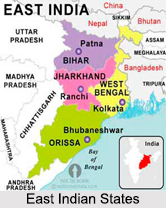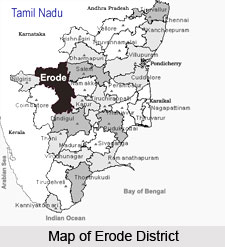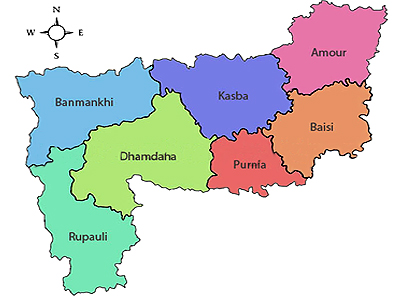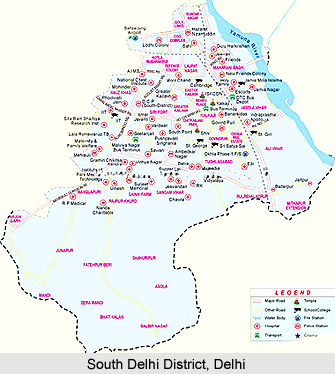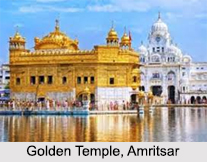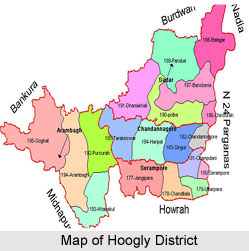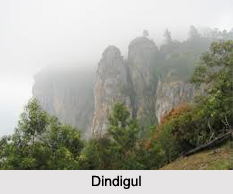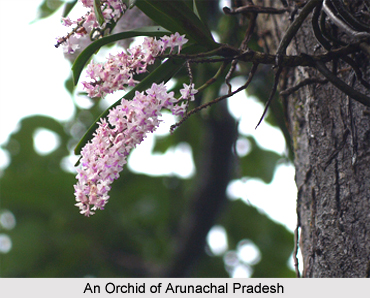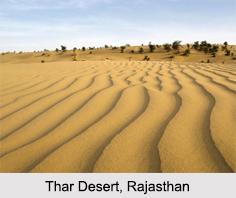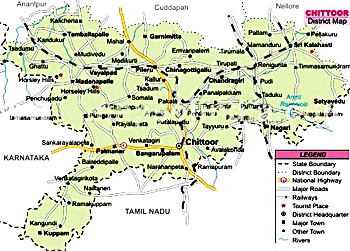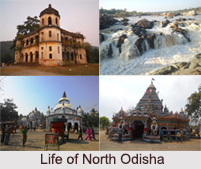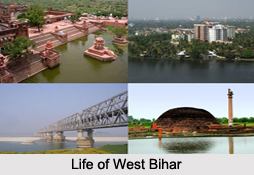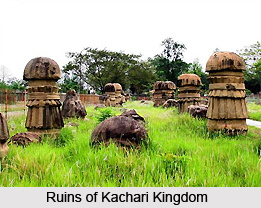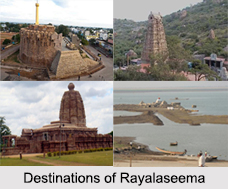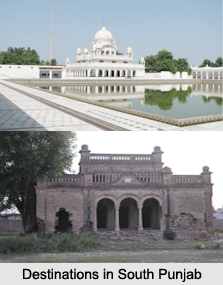Introduction
 Boudh District, also known as the Bauda District, is an administrative district located in the state of Odisha in eastern India. The headquarters of this district lies in the city of Boudh.
Boudh District, also known as the Bauda District, is an administrative district located in the state of Odisha in eastern India. The headquarters of this district lies in the city of Boudh.
Location of Boudh District
The precise location of Boudh District is in central Odisha, to the south of the Mahanadi River which constitutes the western and the northern border of the district. On either side of the Mahanadi lies the Balangir district to the west, Subarnapur district to the northwest, and Angul district to the northeast. The Nayagarh District is situated on the southeast, the Phulbani District to the south, and the Kalahandi District to the southwest.
History of Boudh District
The knowledge of the early history of Boudh is limited to the excavated fact till unearthed. Since the archaeological evidences do not convey ample information, the early history about the origin of the Boudh is still ambiguous. However the discovery of numerous Buddha statues and the relics of inscription, where probably the documents of the ancient times are engraved murmurs the place as an important seat of Buddhist Culture and tradition.
From the evidences till deciphered, the eminent scholars have inferred that the history of Boudh can be recorded from the middle of the 8th century A.D, when the Boudh region was under the Bhanja rulers and was a part of Khinjali Mandala. The earliest ruler of the Bhanja dynasty was Nettabhanja, who extended his sovereignty over the entire region of Dhenkanal but the territory of Boudh was free from its influence. It was his successor who, migrated to the adjacent regions and annexed Boudh, and established the Khinjali Mandala there. As the historical records of Boudh point out, the Bhanja kings ruled Boudh as the feudatory of the Bhauma karas of the Tosali. The historians are also in opinion that during the suzerainty of the Bhanja rulers, Boudh also served as their capital city, with a name called Dhritipura. Satrubhanja Dev II, the final ruler of the Bhanja dynasty was dethroned and killed by the Somavansi ruler of South Kosala, Janmeyjaya - I, which introduced the beginning of the Somavansi dynasty in the history of Boudh.
The heirs of the Bhanjas and their family was crushed by the ruthless expedition of the Kosala king, who installed his kingdom in the present Boudh region and the district came to be known as Odra Desa. As far as the ancient history of Boudh is concerned the Somavansis are the militant community and during their rule in Boudh, the accomplished many campaigns for the extension of their empire. Since Yayatinagara (present Jagati), at the core center of Boudh district was the capital city, entire Boudh had underwent through massive upheavals during the Somavansis.
Finally when the Somavansis migrated to the Utkal region leaving the Boudh to the viceroys, a series of protracted struggle was continued between the Somavansis and the Kalucharis centering the occupation of the territory of Boudh. In the meantime the Gangas snatched the kingdom of Kosala and at the same time overpowered the Somavansis in Boudh region. After the Somavansis, the imperial Gangas attained prominence in the history of Boudh. In course of time the Ganga administrators became semi-independent and continued to establish the tradition of hereditary rulers in Boudh. The available historical records of the Boudh suggest that, it served as a principal center of carrying out militant expeditions of all those dynasties colonized here.
So far the tradition of the hereditary Ganga goes, there emerged the Brahmin family as their final successor. Gandhamardan Dev was the final successor of the Ganga, being issueless adopted a Child from Bhanja family, whom ascended the throne. But he assumed the surname "Dev", therefore in spite of being the Bhanja kinship, he was identified as a Ganga ruler.
In the first half of 17th century, the kingdom of Boudh came under the sway of the Chauhan rulers and Chauhan constructed a strong foundation of their kingdom in Boudh bringing the entire region of Sonepur under their direct control. During this period, the Chauhan rulers established their supremacy in the entire territory of Orissa. The episode of the Chauhan supremacy is marked as a glorious chapter in the history of Boudh. In 1640, Sonepur was fragmented from Boudh to constitute a separate state.
In the meantime when the Muslims invaded Orissa, the Rulers of Boudh in order to secure themselves from the Muslim assault, established a friendly relationship with the Muslims. The available historical document are not evident enough delineating the Muslim era in Boudh but as it is known from the available facts that the Boudh rulers during that time used the title "Swasti Sri Dhirlakhya Dhumbadhipati Jahrkhand Mandaleswar", which was probably conferred by the Muslim rulers.
As the history of Boudh depicts, the final years of the Muslim era was marked by the continuous strife of the Boudh rulers with the Marathas. As Boudh was the core city of the communication between Cuttack and Nagpur, the city was the key attraction of the Maratha chiefs since the Muslim supremacy. The incompetent Muslim successor could not hold their supremacy in the long run and ceded their authority to the Maratha. However the Marathas extracted a regular tribute from the Boudh rulers. The relationship between the Maratha chiefs and the Boudh kings were not strained from the very beginning. It was in the 1800 A.D when the Raja of Boudh rebelled against the Marathas in Boudh, the Maratha chiefs trampled the supremacy of the Boudh king Raja Biswambara Dev and reduced him to a feudatory ruler of Nagpur by paying a regular tribute. Finally the entire territory of Boudh has undergone several changes in the hands of the different indigenous and the Muslim rulers till the British conquest of Orissa in 1803 A.D. The British era in the history of Orissa started from the time when the former Raja of Boudh Raja Biswambara Dev, submitted to the British and entered into an agreement with The East India Company, on 3rd March, 1804 in the solemn aim to recover his past glory.
The history of Boudh experienced a massive turnover right from the time when in the third Anglo-Maratha War when the British soldiers ousted the Marathas from Boudh and incorporated the state in the South West Frontier Agency till 1837, when it was brought under the superintendent of Tributary Mahals, Cuttack. However the British did not entertain the design of raja Biswambara Dev to give him back his kingdom.
The successors of Raja Biswambara Dev survived as the feudatory ruler of the small estates allotted to them by the British Government in a fixed annual tribute of Rs. 800/-. During this time the British, dissected the integrated Boudh and appointed the feudatory rulers in those parts. Finally the British annexed those fragmented states in the territory of the British Empire.
As far as the history of Boudh is concerned, the native rulers of Boudh were incompetent and they ceded their territory without any resistance to everyone who campaigned the kingdom of Boudh. Raja Jogindar Dev was benevolent and generous and introduced the English education in the State. During his regime, Boudh has made a considerable progress in the field of modern education and Culture. His sudden death in 1913, results in the numerous uprising and rebellions throughout Boudh, which was successfully suppressed by Raja Narayan Dev. Raja Narayan Dev was the last ruler of Boudh, when it was merged with the Orissa province on 1st January 1948. Finally in 1994, the Boudh-Khondmals is raised to the status of a separate functioning district on 2nd January 1994.
Geography of Boudh District
Boudh District experiences subtropical type of climate, with hot and dry summers, cold and dry winter and hot and humid rainy seasons. In the summer season, the temperature reaches to 45degree C and in the winter season temperature may come down to 10 degree. The rainfall is not evenly distributed and varies from time to time.
Landforms in Boudh District
The total area of the Boudh District that is under cultivation is 358292 hectares. Paddy is cultivated in about 64000 hectares of land. The different irrigation projects include Salki Medium Irrigation project, Minor Irrigation project, Lift Irrigation project, Diversion weir, Dugwell and others.
Culture of Boudh District
 The rich Culture of Boudh is silhouetted by the multi-layered civilization, traced far back in the 2nd century A.D, since when it was the important seat of the Buddhism, Saivism and Shakti cult of the country. The educational and the cultural tradition of Boudh initiated by the Somavansis, stride in quick pace during the Gangas and the Suryavamsis. However, the customs and manners including their respective festivals are the clear manifestation of the diversified culture of Boudh.
The rich Culture of Boudh is silhouetted by the multi-layered civilization, traced far back in the 2nd century A.D, since when it was the important seat of the Buddhism, Saivism and Shakti cult of the country. The educational and the cultural tradition of Boudh initiated by the Somavansis, stride in quick pace during the Gangas and the Suryavamsis. However, the customs and manners including their respective festivals are the clear manifestation of the diversified culture of Boudh.
The socio-religious functions are the evident representation of the culture of Boudh. The socio-religious occasions generally reveals the sectarian culture of Boudh.
The Karma Dance, performed by the Ghasis community during the occasion of Bhadrab (August-September). Both the men and women performed the Karma dance on the 11th day of the bright fortnight of the same month. The girls sing the Karma song and the boys` play on the Mrudanga and Madala. The dance accompanied to the Karma song is an offering to the goddess Karma, whom they worship in the occasion.
The Danda Nata is a ritual dance popular in Boudh. The dance performed during the worship of God Hara and Goddess Parvati during the month of Chaitra and Boisakh. Specially the backward classes participate in the dance and the Ghasis play the musical instruments. The dance Danda Nata is the representation of the social segments of life of the tribal and the backward classes. Followed by the main event of Danda Nata, is performed a group of dances like Fakir and Fakirani, Savara and Savarani, Chadeya and Chadouni one after another in a sequential way. The leela or the dramatic performance based on a story of the Hindu epic finally concludes with the dance performance of Patarasaura and Patarasaurani. The entire performance of Danda Nata depicts the strong Hindu culture in Boudh.
Dalkhai Dance performed by the girls in the month of Aswina on the occasion of Bhaijuntia is the reflection of the rural culture with the essence of Hinduism, the prevalent religion here.
The aroma of Hinduism is the culture of Boudh is found in the occasion of the Festivals. The domestic festivals are performed in each house, which includes mainly the worship of the family deities and performing fast on account of several Bratas and ekadashis, mainly guided by the phases of moon. But the public festivals represent the culture of Boudh in a broader aspect. Since on the occasion of public festivals, quite a good number of people, belonging to different caste and creed congregate in a core point, the public festivals depict the multi-ethnic cultural tradition of Boudh. Moreover the fairs, develop centering the festivals, where lot of people assemble are the representation of the multi-cultural tradition of Boudh. Ratha Jatra, Lakshmi Puja, Nuakhai. Laxmi Puja, Shiva Ratri, Dusshera, Dol Jatra, Puajiuntia and Bhaijuntia, Ram Leela and Kailashi Jatra are some of the important festivals of Boudh perform as the cultural festivals.
The Christian and the Buddhist tradition presently also influence the Culture of Boudh. The Christian and the Muslim festivals are performed during the Good Friday, Easter Saturday, Easter Sunday, Easter Monday, Christmas Eve and Christmas Day with great pomp and show. The Muslim inhabitant also, celebrated their festivals like Id-Ul-Fitr,Id-Ul-Zuha,Shab-E-Barat,Shab-E-Quadar,Juma-Tul-Wida,Muharram,Shab-E-Meraj,Milad-Un-Nabi, and Ramzan like their fellow brethren in other parts of the state.
The religious festivals and occasions are the clear representations of the Cultural tradition of Boudh.
Festival in Boudh District
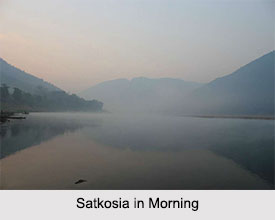 Boudh District celebrates a number of important festivals like Chuda Khai Jatra, Ratha Yatra, Laxmi Puja, Nuakhai, Sivaratri, Dasahara, Dol Jatra, Puajiuntia and Bhaijiuntia, Ramaleela, Kailashi Jatra, New Year`s day , Good Friday, Easter Saturday, Christmas Day, Id-Ul-Fitre, Id-Ul-Zuha, Shab-E-Barat, Shab-E-Quadar, Juma-Tul-Wida, Muharram, Shab-E-Meraj, Milad-Un-Nabi, and Ramadan
Boudh District celebrates a number of important festivals like Chuda Khai Jatra, Ratha Yatra, Laxmi Puja, Nuakhai, Sivaratri, Dasahara, Dol Jatra, Puajiuntia and Bhaijiuntia, Ramaleela, Kailashi Jatra, New Year`s day , Good Friday, Easter Saturday, Christmas Day, Id-Ul-Fitre, Id-Ul-Zuha, Shab-E-Barat, Shab-E-Quadar, Juma-Tul-Wida, Muharram, Shab-E-Meraj, Milad-Un-Nabi, and Ramadan
Economy of Boudh district
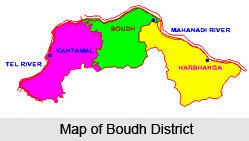 Economy of Boudh district is primarily agrarian in nature. Fisheries and animal husbandry also contribute greatly to the economy. Small scales industries are also a booming sector in the economic scenario of Boudh district especially the textiles and mining industries. Paddy is the principle crop and is grown in about 75% of the total cultivated land area. The different irrigation projects include Salki Medium Irrigation project, Minor Irrigation project, Lift Irrigation project, Diversion weir, Dugwell and others.
Economy of Boudh district is primarily agrarian in nature. Fisheries and animal husbandry also contribute greatly to the economy. Small scales industries are also a booming sector in the economic scenario of Boudh district especially the textiles and mining industries. Paddy is the principle crop and is grown in about 75% of the total cultivated land area. The different irrigation projects include Salki Medium Irrigation project, Minor Irrigation project, Lift Irrigation project, Diversion weir, Dugwell and others.
Fisheries are a huge profit making sector of Boudh district. Available water resources have helped to enhance the growth of pisciculture in the district. Boudh fish farm is one of the good breeding and rearing government farm of the state of Orissa, having 8.5 acre of water area comprising 4.80 acre of breeder tanks and 3.70 acre nursery tanks. FFDA (fish farmers development agency) has been set up at Boudh district to popularise fish culture as an alternative way of employment generation and eradication of poverty. The institution provides training to the selected beneficiaries, assists in construction and renovation water resources, arrange credit from nationalised banks. The most important gain from FFDA is that aquaculture as a commercially gainful activity has been fully established.
Animal husbandry is an indispensable part of Boudh district`s economic system. The prime objective of this sector is to boost the production of milk, egg and meat by adopting modern scientific method. To improve the socio-economic condition by providing self-employment opportunities to unemployed youth and to raise the family income is also an important part of their agenda. More than 75% of the rural households own livestock and earn their supplementary income. Livestock production is an essential part of the rural livelihood systems. Livestock production takes place in millions of small holders, scattered throughout Boudh District. Improvement in livestock production is an important alley for increasing the income of marginal and small farmers and landless labourers, for the uncertainties of crop production. Animal health care service, breeding service, feed and fodder development, and marketing facilities are among the services provided by this sector.
Industries are an upcoming sector to boost the economy of Boudh district. Small scale industries of Boudh district include food based industries, chemical based industries, engineering based industries, textile based industries, forest based industries and metallurgical based industries. The mining industry is quite a profit making industry. Their principle objective is to lease out the potential mineral bearing areas to the interested entrepreneurs and collect the royalty on the mineral off take from the leased out area. The Textile zone of Boudh district is functioning since 9th December 1985 and it provides employment to a total population of 6700 weavers. Government of India as well as Government of Orissa has launched various Developmental schemes like central sponsored Central scheme and State Schemes for the development of weaver`s co-operative societies and weavers of Boudh District.
The economy of Boudh district is supported both by agriculture and small scale industries.
Tourism in Boudh District
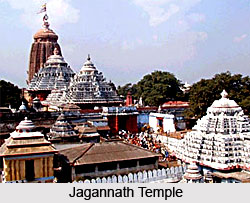 Boudh district in Orissa is a paradise for devotees and nature lovers. The place is famous for its century old temples, ancient Buddha statues and caves. The spread of Shaivism, Vaishnavism and numerous other cults and shrines dedicated to various deities were found in the region. There are numerous places of tourist attraction in Boudh, namely, Buddha Statue, Ramanath Temple, Jogindra Villa Palace, Hanuman Temple, Chandra Chuda and Matengeswar Temple, Bhiarabi and Madan Mohan temple, Jagannath temple, Debagarh, Jagati, Purunakatak, Padmatola Sanctuary and Satakosia Gorge, Dambarugada, Nayakpada Cave etc.
Boudh district in Orissa is a paradise for devotees and nature lovers. The place is famous for its century old temples, ancient Buddha statues and caves. The spread of Shaivism, Vaishnavism and numerous other cults and shrines dedicated to various deities were found in the region. There are numerous places of tourist attraction in Boudh, namely, Buddha Statue, Ramanath Temple, Jogindra Villa Palace, Hanuman Temple, Chandra Chuda and Matengeswar Temple, Bhiarabi and Madan Mohan temple, Jagannath temple, Debagarh, Jagati, Purunakatak, Padmatola Sanctuary and Satakosia Gorge, Dambarugada, Nayakpada Cave etc.
Pilgrimage Tourism in Boudh District
Three Buddhist statues are found in Boudh indicates that it was once a centre of Buddhist culture. One of the statues is present in Boudh town. The total height of this image is 6ft. 9 inches of which the seated figure measures 4 ft. 3 inches in height and 3 ft. 10 inches from knee to knee. It is seated in the Bhumisparsa Mudra on a lotus throne 1 ft. 2 inches in height placed on a pedestal. The whole image is built up in sections with carved stones. The only attendant figures are two Gandharvas flying with garlands in their hands on the sides of the head. At a distance of 40 km. from Boudh town the image of Budhha is in the village Shyamsundarpur. The height of statue is 5 feet and the image is in the same posture as in Boudh town. Locally it is known as Jharabaudia Mahaprabhu. The other Budhha statue is also seen in the village Pragalapur which is at a distance of 2 km. from Shyamsundarpur. The height of this statue is 3.5 ft. In the left hand side of the statue there are 3 numbers of invisible image and on the right hand side their lies five numbers of image called Ugratara.
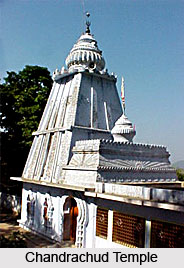 A group of three temples of Lord Shiva are situated at Boudh town called the Rameswar or Ramanath temples, dating back to the 9th century A.D. The decorative motifs and the plastic art of three temples at Boudh are certainly superior to and older than the great Lingaraja -Ananta -Vasudeva group. Their plan is quite different from any other temples. In plan these temples are eight-rayed stars and the Argha-Pattas of the Lingas are also similar. These magnificent temples were built of red sandstone and profusely carved. The temples with rich texture and curved surfaces are strikingly noteworthy.
A group of three temples of Lord Shiva are situated at Boudh town called the Rameswar or Ramanath temples, dating back to the 9th century A.D. The decorative motifs and the plastic art of three temples at Boudh are certainly superior to and older than the great Lingaraja -Ananta -Vasudeva group. Their plan is quite different from any other temples. In plan these temples are eight-rayed stars and the Argha-Pattas of the Lingas are also similar. These magnificent temples were built of red sandstone and profusely carved. The temples with rich texture and curved surfaces are strikingly noteworthy.
Bhiarabi and Madan Mohan temples are built nearby the palace of the ex-ruler of Boudh. In Bhairabi temple goddess Bhairabi has been worshipped. In Madan Mohan temples idol of Radha-Krishna has been worshipped. Gayatri Pragnya Mandir is also situated nearby to these temples. Jagannath temple is one of the ancient temples of Orissa. It is situated at the heart of Boudh town. Here Ratha Yatra is celebrated with large pompous and show.
Jagati is situated at a distance of 16 Km. from Boudh. The twin temples of Nilamadhava and Sidheswar were situated near the village at Gandhradi. These temples were constructed under the patronage of the Bhanja rulers of Khinjali mandala in 9th century A.D. The two temples were built on one platform which is exactly similar to each other. The one on the left hand is dedicated to Siva named Siddheswar and its sikhara is surmounted by a Shivalinga. The second is dedicated to Vishnu named Nilamadhava and its sikhara is surmounted by a wheel of blue chlorite. The principle of construction of the jagamohanas at Gandharadi is slightly different than that of other temples. Their roofs are built on the cantilever principle and originally it appears to have been supported on twelve large pillars arranged as a hollow square.
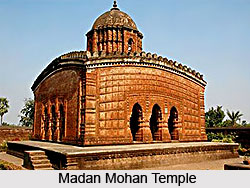 Purunakatak is situated at a distance of 30 Km. from Boudh on Boudh-Bhubaneswar road. Goddess Bhairabi is the presiding deity of Boudh District. Durga puja festival is observed here for sixteen days. Just opposite to the Bhairabi temple is the temple of Maheswar Mahadev.
Hanuman Temple is situated in the midst of the Mahanadi River to the east of Boudh town. The Hanuman temple was constructed by a religious follower and was constructed with charitable donations. This shrine was constructed on a large stone. The temple commands a beautiful view, especially during rain when the Mahanadi is in full flow
The Chandra Chuda and Matengeswar temple are situated on the bank of river Mahanadi in Boudh town. Both the temples are Shiva temples. In the Matengeswar temple there is also separate temple for goddess Parvati.
Purunakatak is situated at a distance of 30 Km. from Boudh on Boudh-Bhubaneswar road. Goddess Bhairabi is the presiding deity of Boudh District. Durga puja festival is observed here for sixteen days. Just opposite to the Bhairabi temple is the temple of Maheswar Mahadev.
Hanuman Temple is situated in the midst of the Mahanadi River to the east of Boudh town. The Hanuman temple was constructed by a religious follower and was constructed with charitable donations. This shrine was constructed on a large stone. The temple commands a beautiful view, especially during rain when the Mahanadi is in full flow
The Chandra Chuda and Matengeswar temple are situated on the bank of river Mahanadi in Boudh town. Both the temples are Shiva temples. In the Matengeswar temple there is also separate temple for goddess Parvati.
Leisure Tourism in Boudh District
Jogindra Villa Palace is the palace of ex-Ruler of Boudh locally known as Rajabati. This was constructed during the reign of Raja Jogindra Dev, who a generous ruler. The palace is a picturesque and a strong building commanding a fine view of Mahanadi.
The Padmatola Sanctuary in the district can be reached from Charichhak 43 km. east on the Bhubaneswar -Balangir road and by a fair weather road from Daspalla. The distance of this place from Boudh town is 80 Km. To the end of this sanctuary the majestic Satakosia Gorge with its lush green forests and rich wild life is located. The crocodile sanctuary set up at Tikarapada, located on the left bank of the gorge is an added attraction of this place. The meandering Mahanadi, flowing amidst the hills forms here the mightiest gorge in India, measuring 22 km long. This is an ideal place for boating, angling and adventure. Goddess Binikeyee, the presiding deity of Satakosia gorge is enshrined at the entrance. She is seen in the form of a four armed Chamundi and is worshipped according to Tantric rites.
The Dambarugada Mountain is situated at a distance of 21 Km. from Boudh town toward Boudh -Balangir road. The name the place is Sangrampur. The river Mahanadi flows down the mountain. The mountain gives a curve look from all of its side. The height of the mountain is 70 feet. On the top it there is a temple of Chiatanya deva. The Nayakpada Cave is located at a distance of 12 Km. from Boudh town in the Boudh-Bhubaneswar road. This cave was said to have been associated with mythology. Once upon a time this cave was ashram of sadhus. The forest here is in rich of different types of flora and fauna.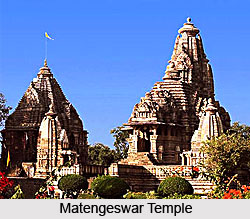
Visiting Information on Boudh District
How to Reach Boudh District
Boudh is well connected with road and rail with other district headquarter and the state capital Bhubaneshwar.
Air: The nearest airport is at Bhubaneshwar.
Rail: Regular train services are available from Bhubaneshwar, like Bhubaneshwar - Sambalpur Intercity Express, Hirakud Express, Puri-Sambalpur passenger train. To reach Boudh one has to get down at Rairakhole station. From here one has to travel around 27 Km. either by Bus or taxi to reach Boudh.
Road: The distance of Boudh from Bhubaneshwar is 240 Km.
